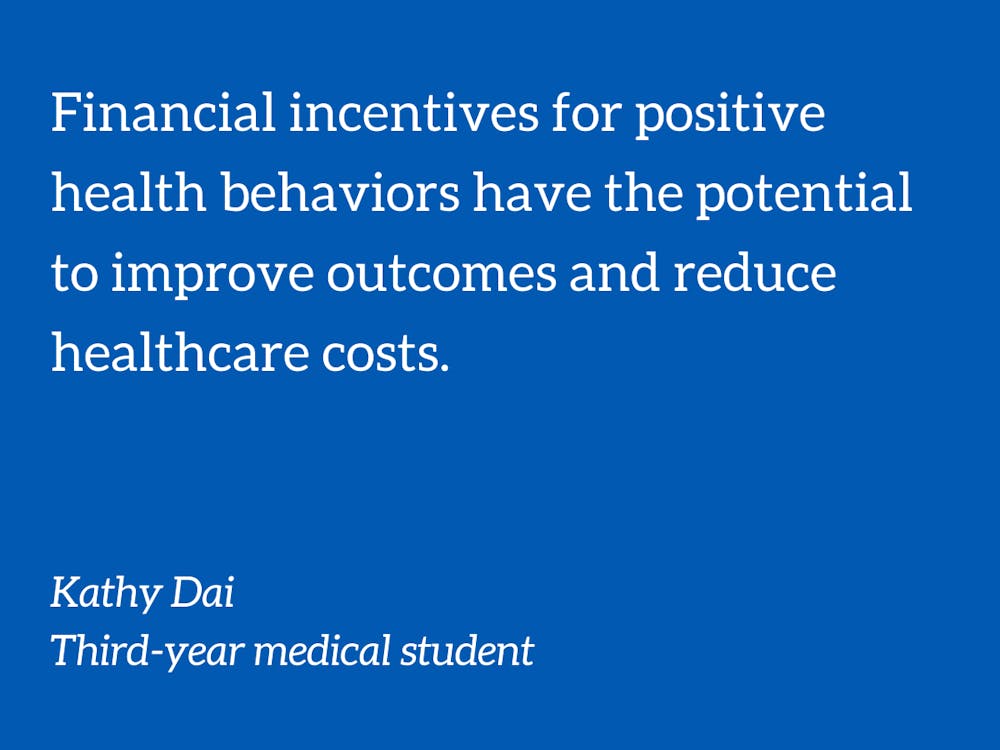Would you be more likely to go to the gym if you were paid for it? The answer likely depends on how much and in what context, according to a recent paper from behavioral economist Dr. Katy Milkman and colleagues. Their use of financial incentives to increase exercise was the latest major contribution to a growing research field seeking to leverage insights from behavioral science to improve health outcomes.
In the “megastudy” conducted by Milkman et al., dozens of incentive programs were compared based on their ability to increase gym attendance. All programs except placebo included a financial microreward for each visit to the gym (typically $0.22 per visit), with some programs offering higher dollar amounts and others embellished with behavioral science-proven features – online commitment contracts, texts reinforcing exercise as a social norm, or a free audiobook to leverage the principle of “temptation bundling,” for example.
The top-performing program, aptly named “Incentives to Get Back on the Wagon,” offered $0.22 for every planned gym visit, $0.11 for every unplanned gym visit, and a bonus of $0.09 on top of the normal $0.22 for going to the gym after missing the last planned visit. Participants receiving this incentive package logged 0.40 more gym visits per week during the four-week experiment, corresponding to about a 27% increase in exercise compared to placebo.
Behavioral science-based interventions are most powerful when scaled. On a population level, an additional 0.40 gym visits per week would have an enormous impact on public health. A similar study found simple text-based reminders increased influenza vaccine uptake by 5%, corresponding to millions more vaccinated individuals if implemented on a national level.
In addition to the inherent benefits of increasing positive health behaviors such as exercise and vaccination, clinicians and policy makers should embrace the growing applications of behavioral science to healthcare for several reasons.
First, incentivizing healthy lifestyle behaviors will decrease healthcare costs in the long run. Prevention costs less than treatment, especially for chronic conditions such as type 2 diabetes or coronary artery disease, and current prevention strategies are sparse. Beyond motivational interviewing or the setting of specialty prevention clinics, healthcare providers are often not equipped with the time or expertise to provide effective lifestyle counseling. The highly effective therapies that do exist tend to be costly; Wegovy (semaglutide), a weight loss medication approved by the FDA in 2021 costs over $1300 for a one-month supply. While the cost-effectiveness of any intervention should be rigorously studied prior to large-scale implementation, incentive programs using microrewards (pennies per behavior) have the potential to be a high-value public health strategy.
Second, financial incentives can mitigate certain barriers that disproportionately impact low-income, Black, and Hispanic individuals. A guaranteed financial incentive for getting vaccinated, for example, can offset the cost of transportation, lost wages, or childcare. In a North Carolina study that offered $25 for getting vaccinated against COVID-19 or driving someone to get vaccinated, Black, Hispanic, or low-income individuals were more likely to list the cash card or “Someone driving me here” as a reason for getting vaccinated. Financial incentives can help reduce socioeconomic disparities in the opportunity to engage in positive health behaviors.
Third, financial incentives for health behaviors already exist, even if they are not explicit or intentional. “Choice architecture,” the context in which individuals make decisions, will always nudge individuals towards certain behaviors, healthy or not. Individuals are more likely to choose the cereal at eye level and less likely to drink soda in states that tax sugary beverages. By studying the impact of financial incentives on patient behaviors, clinicians and policymakers can intentionally align choice architecture to support healthier behaviors.
Several concerns need to be addressed before financial incentives for exercise, dietary changes, medication adherence, or other health behaviors can be implemented. Sustainability is a key challenge, as demonstrated by the decline in gym visits several weeks after incentive programs were removed in the Milkman et al study. In addition, potential incentives need to be rigorously tested for effectiveness—in Milkman et al., neither lay observers nor behavioral science experts were able to accurately predict which incentive programs would be most effective, and they were about 9 times too optimistic overall. Lastly, red flags are often and rightfully raised when financial incentives are discussed in the context of healthcare decisions. The importance of safeguarding any incentive program from causing unintentional harm, especially to low-income communities, cannot be overstated.
With further research and buy-in from all stakeholders in the healthcare system, financial incentives for positive health behaviors have the potential to improve outcomes and reduce healthcare costs.
Kathy Dai is a third-year medical student at Duke University. Her column “Follow the Money” runs every third Friday.
Get The Chronicle straight to your inbox
Signup for our weekly newsletter. Cancel at any time.

